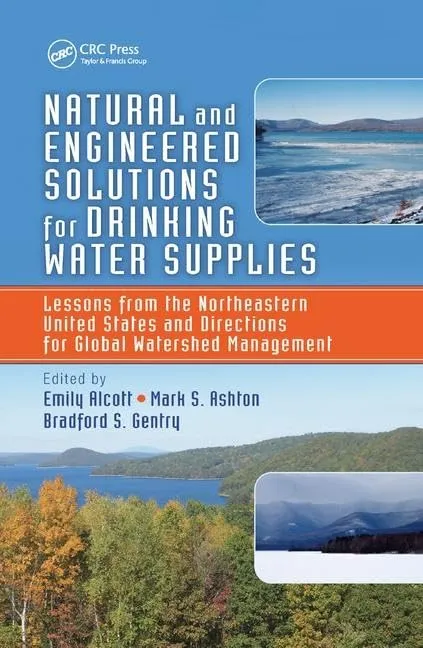Home
|
Products
|
9789356962026

Natural and Engineered Solutions for Drinhing Water Supplies | Paperback
by Alcott
Highlights

9781138374720
ISBN

Alcott
Author

303
Pages

215 gm
Weight

English
Language

2013
Year

1st Edition
Edition

Paperback
Binding
₹6773
₹7526
Illuminating opportunities to develop a more integrated approach to municipal water system design, Natural and Engineered Solutions for Drinking Water Supplies: Lessons from the Northeastern United States and Directions for Global Watershed Management explores critical factors in the decision-making processes for municipal water system delivery. The book offers vital insights to help inform management decisions on drinking water supply issues in other global regions in our increasingly energy- and carbon-constrained world.The study evaluates how six cities in the northeastern United States have made environmental, economic, and social decisions and adopted programs to protect and manage upland forests to produce clean drinking water throughout their long histories. New York, New York; Boston and Worcester, Massachusetts; New Haven and Bridgeport, Connecticut; and Portland, Maine have each managed city watersheds under different state regulations, planning and development incentives, biophysical constraints, social histories, and ownerships.Some of the overarching questions the book addresses relate to how managers should optimize the investments in their drinking water systems. What is the balance between the use of concrete/steel treatment plants (gray infrastructure) and forested/grassland/wetland areas (green infrastructure) to protect surface water quality? The case studies compare how engineered and/or natural systems are employed to protect water quality. The conclusions drawn establish that it makes environmental, economic, and social sense to protect and manage upland forests to produce water as a downstream service. Such stewardship is far more preferable than developing land and using engineering, technology, and artificial filtration as a solution to maintaining clean drinking water. Lessons learned from this insightful study provide effective recommendations for managers and policymakers that reflect the scientific realities of how forests and engineering can be best integrated into effective watershed management programs and under what circumstances.
Online store of medical books
Discover a comprehensive range of medical books at our online store. From anatomy and physiology to the latest clinical guidelines, we've got you covered.
Trusted by students, educators, and healthcare professionals worldwide. Browse top publishers and expert-authored titles in every medical specialty. Enjoy fast shipping, secure payments, and easy returns. Your one-stop destination for quality medical knowledge at your fingertips.
Whether you're preparing for exams or expanding your clinical expertise, our curated collection ensures you have the right resources at hand. Dive into detailed illustrations, case studies, and up-to-date research that enhance your understanding and practical skills.
We regularly update our inventory to include the latest editions and newly released titles, helping you stay current in the ever-evolving medical field. Our advanced search and filtering tools make finding the perfect book quick and hassle-free.
Join our community of lifelong learners and medical enthusiasts. Sign up for exclusive discounts, early access to new arrivals, and personalized book recommendations tailored to your professional interests.
